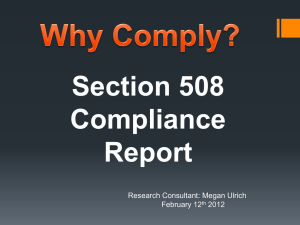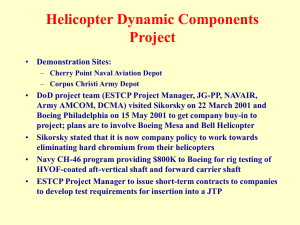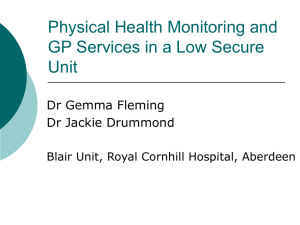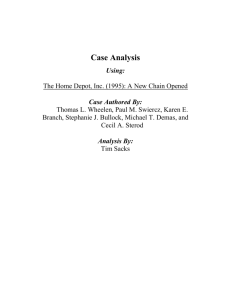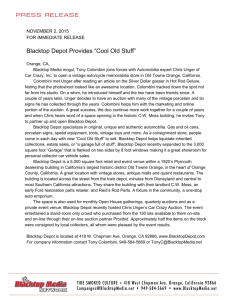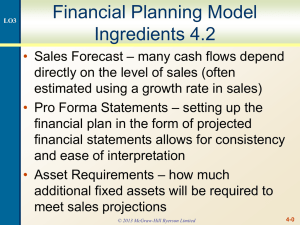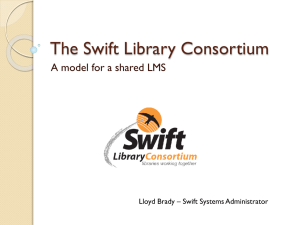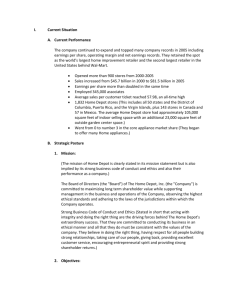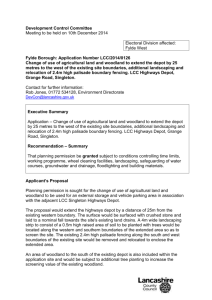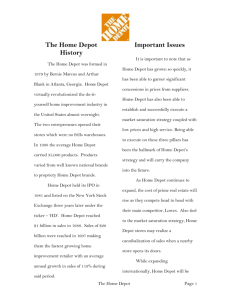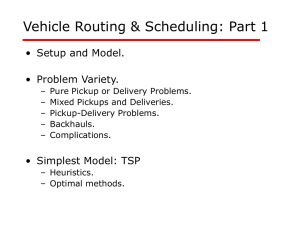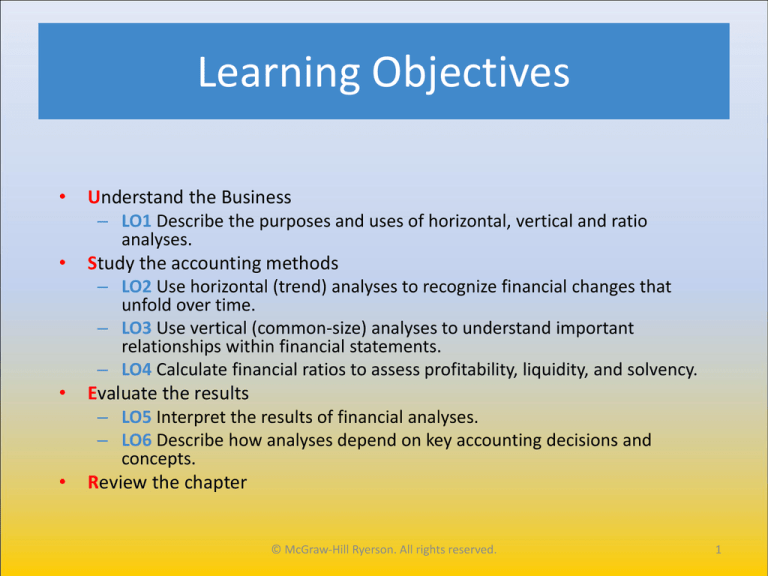
Learning Objectives
•
Understand the Business
– LO1 Describe the purposes and uses of horizontal, vertical and ratio
analyses.
•
Study the accounting methods
– LO2 Use horizontal (trend) analyses to recognize financial changes that
unfold over time.
– LO3 Use vertical (common-size) analyses to understand important
relationships within financial statements.
– LO4 Calculate financial ratios to assess profitability, liquidity, and solvency.
•
Evaluate the results
– LO5 Interpret the results of financial analyses.
– LO6 Describe how analyses depend on key accounting decisions and
concepts.
•
Review the chapter
© McGraw-Hill Ryerson. All rights reserved.
1
Interpreting Horizontal Analyses
• Horizontal analysis of The Home Depot’s balance
sheet shows the company did not significantly grow
or decline in 2009.
• Total assets decreased 0.7%.
• Horizontal analysis of The Home Depot’s income
statement shows net sales fell by 7%, probably a
result of the slowdown in the global economy.
LO5
© McGraw-Hill Ryerson. All rights reserved.
2
Interpreting Vertical Analyses
• Vertical analysis for The Home Depot’s balance sheet
shows the company has shifted from debt to equity.
– Debt was 57% and equity 43% in 2008.
– Debt was 53% and equity 47% in 2009.
• Vertical analysis of The Home Depot’s income
statement shows Cost of Goods Sold and Operating
Expenses are the important determinants of the
company’s profitability.
LO5
© McGraw-Hill Ryerson. All rights reserved.
3
Interpreting Ratio Analyses
Profitability Ratios
1. Net Profit Margin
2. Gross Profit Percentage
LO5
The Home Depot was able to cut costs enough to
increase net income more than the decline of Net
Sales Revenue. This allowed net profit margin to
increase in 2009.
The slight increase means The Home Depot
made slightly more gross profit on each dollar of
sales in 2009; possible due to higher selling
prices or lower unit costs.
© McGraw-Hill Ryerson. All rights reserved.
4
3. Asset Turnover
4. Fixed Asset Turnover
5. Return on Equity
LO5
The asset turnover ratio suggest assets did not
generate sales as efficiently in 2009 as in the
previous year.
The amount of sales generated by fixed assets
decreased in 2009. This is unfavourable, but
understandable because 2009 was a difficult year
for retailers. In comparison, Rona (a competitor)
had a better ratio of 5.53.
The Home Depot’s ROE increased in part because
of the increase in shareholders’ equity to finance
debt repayment mentioned earlier. The Home
Depot was able to cut operating expenses enough
to increase net income, which increased ROE.
© McGraw-Hill Ryerson. All rights reserved.
5
6. Earnings per Share
EPS increased along with the increase in ROE.
7. Quality of Income
8. Price/Earnings (P/E) Ratio
LO5
The Home Depot’s ratio is much greater than
1.0 , meaning operations are producing positive
results. Most cash based business have high
quality of income ratios because their sales are
collected in cash immediately.
The P/E ratio increased slightly. In 2009
investors are willing to pay 17.3 times earning to
buy one share. In comparison, Rona (a
competitor) had a lower P/E ratio of 14.0.
© McGraw-Hill Ryerson. All rights reserved.
6
Liquidity Ratios
9. Receivables Turnover
10. Inventory Turnover
11. Current Ratio
This ratio is not meaningful for businesses that
make most sales for cash like The Home Depot.
Although the economy was weak in 2009, The
Home Depot was able to maintain the inventory
turnover and days to sell ratios.
The current ratio increased from 2008 to 2009.
In this industry a current ratio greater than 1.0 is
acceptable, The Home Depot’s current ratio
appears strong.
12. Quick Ratio
The quick ratio also increased. In this industry a
low quick ratio is common.
LO5
© McGraw-Hill Ryerson. All rights reserved.
7
Solvency Ratios
13. Debt to Assets
This ratio shows the proportion of total assets
financed by creditors. The higher the ratio, the
riskier the financing strategy. In 2009, The Home
Depot relied less on creditors and more on
shareholders.
14. Times Interest Earned
Times Interest Earned above 1.0 indicates that
net income is sufficient to cover the company’s
interest expense. The Home Depot’s ratio of 5.9
is more than enough to pay interest expense.
15. Capital Acquisitions Ratio
LO5
This ratio shows that The Home Depot was able
to pay for all purchases of property, plant and
equipment using cash generated from
operating activities.
© McGraw-Hill Ryerson. All rights reserved.
8

